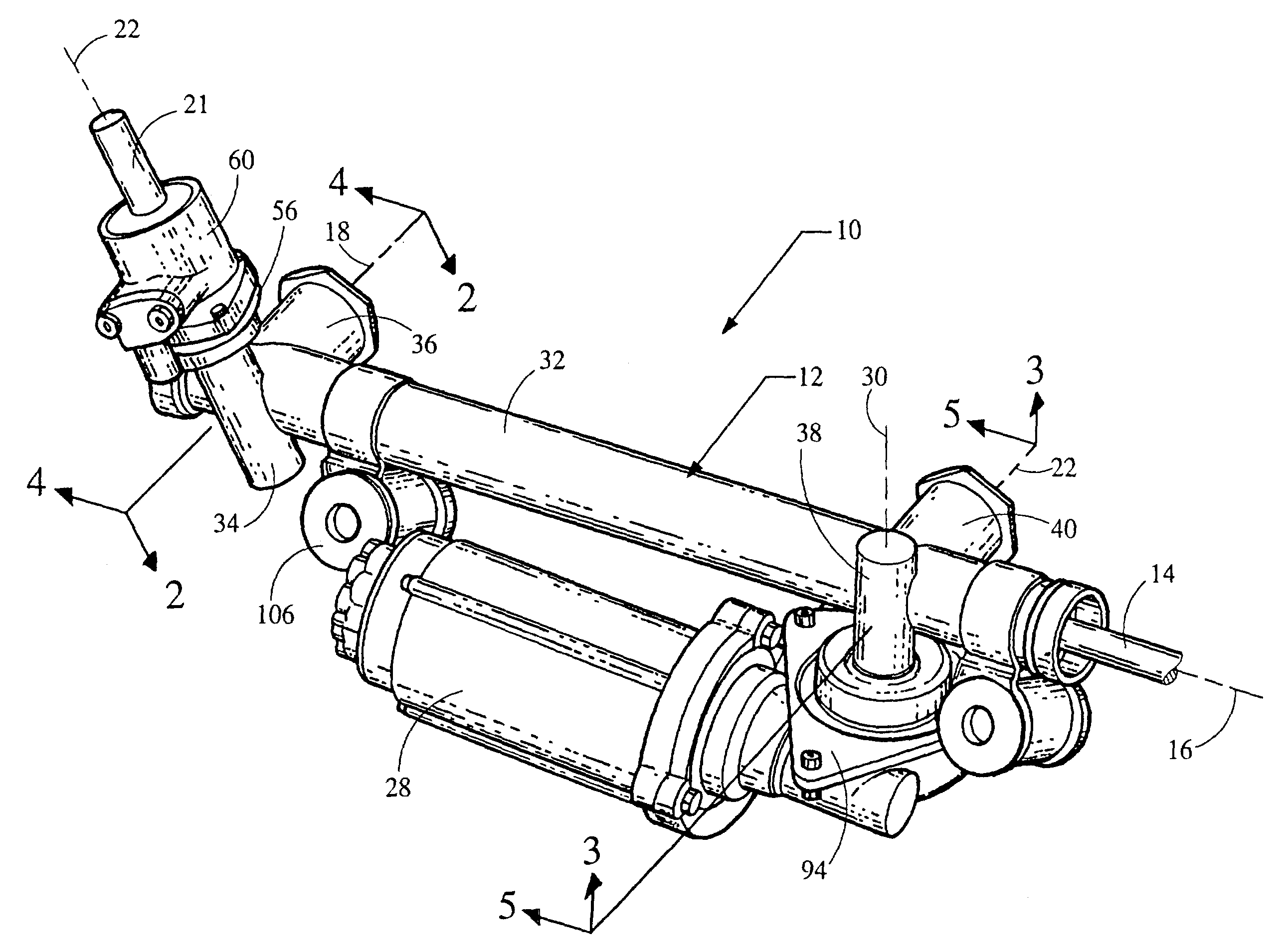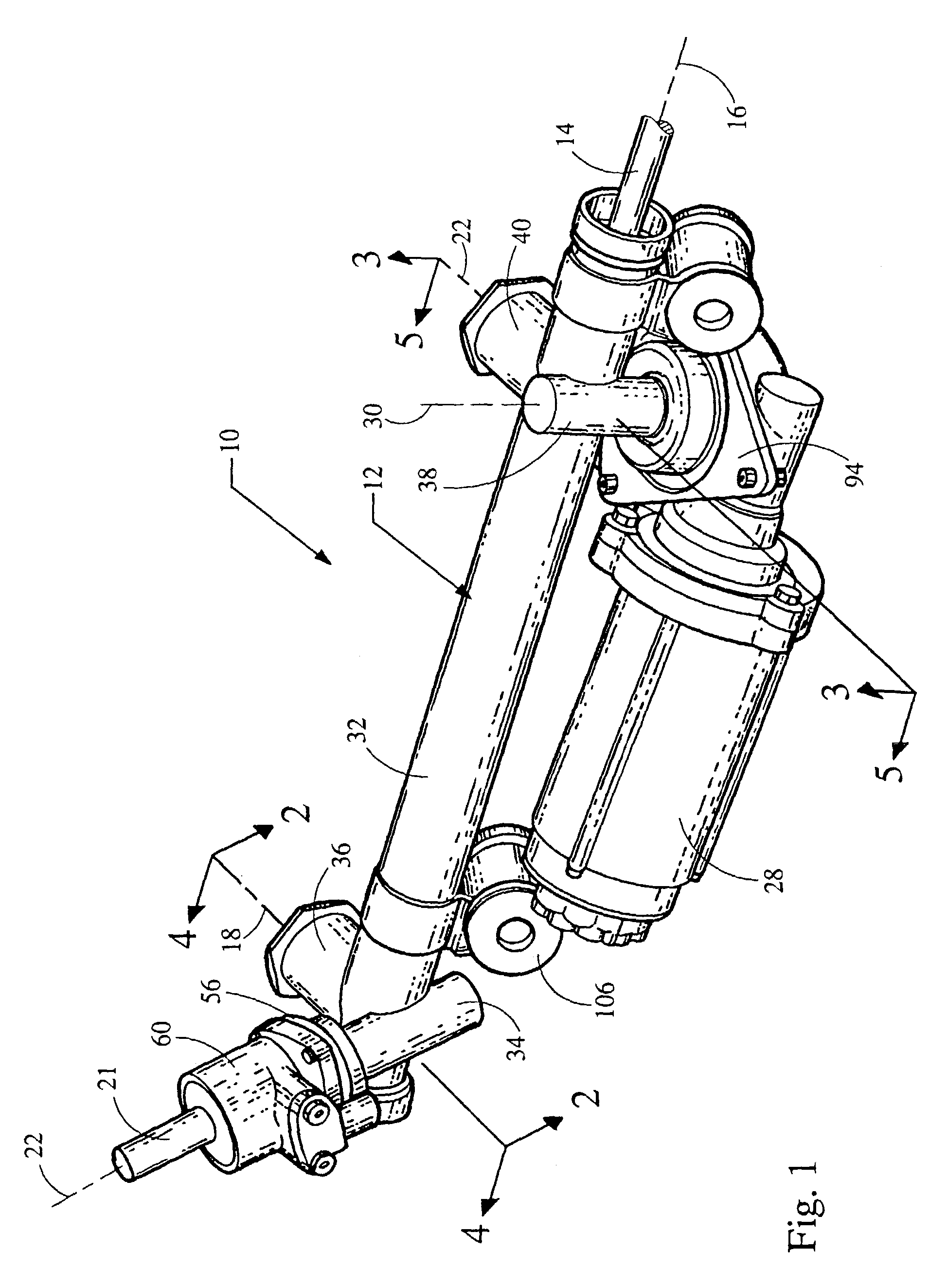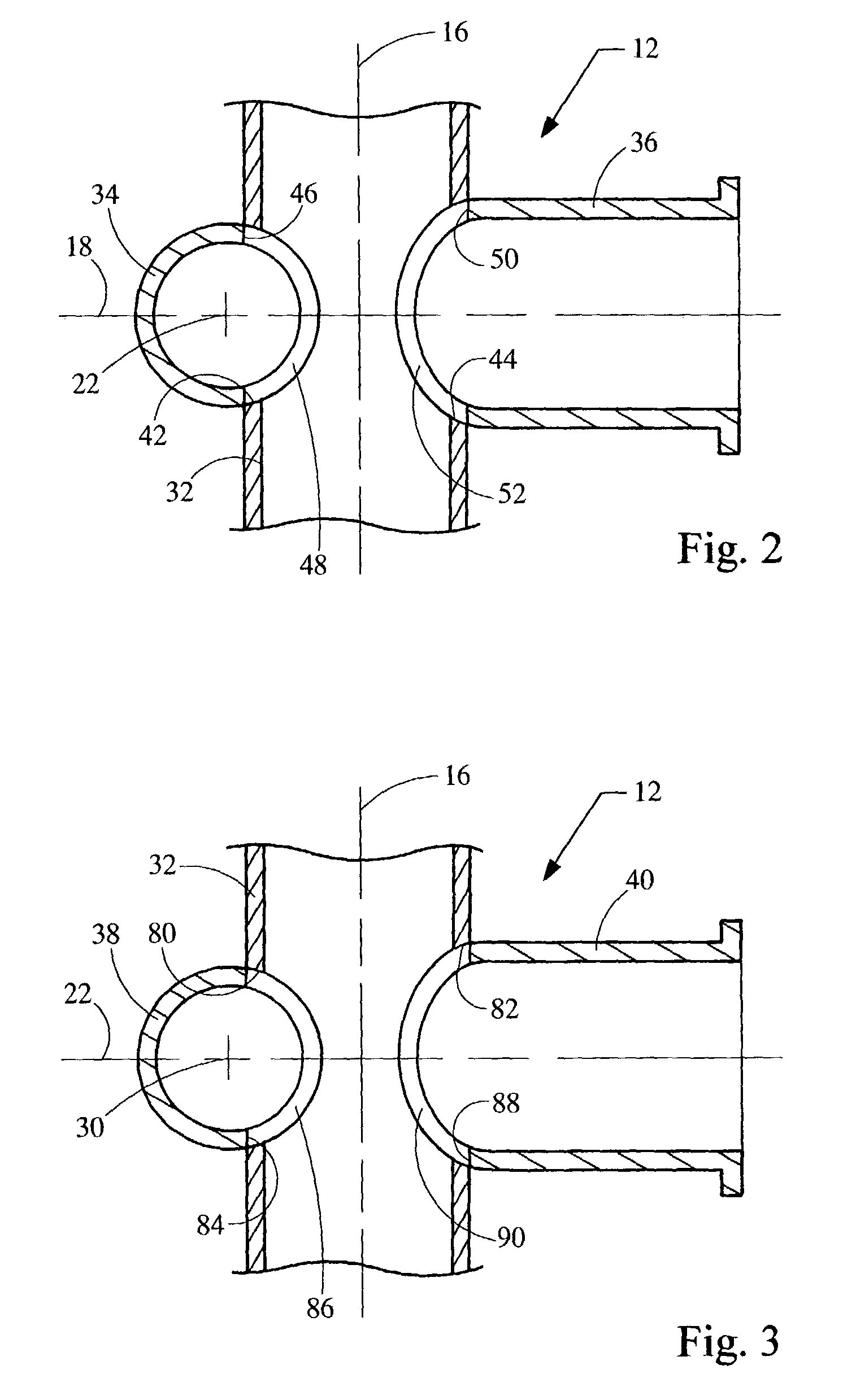Automotive steering mechanism housing
a steering mechanism and housing technology, applied in mechanical equipment, transportation and packaging, gearing, etc., can solve the problems of increasing the number of components and complexity of manufacturing operations, prohibitively high cost of single die cast housings, and inconvenient manufacturing, so as to reduce facilitate manufacturing. , the effect of reducing the cost of housings
- Summary
- Abstract
- Description
- Claims
- Application Information
AI Technical Summary
Benefits of technology
Problems solved by technology
Method used
Image
Examples
Embodiment Construction
[0015]In accordance with a preferred embodiment of this invention, referring to the Figures, an electronic power assist steering system 10 for an automotive vehicle comprises a composite tubular housing 12. The steering system includes, as major elements, a rack 14 elongated along an axis 16 and operatively coupled to wheels of the vehicle. During operation, the rack is axially displaced in response to a steering command from the operator to vary the orientation of the wheels for steering the vehicle. A drive pinion 20, shown in FIG. 4, engages rack 14 at a location corresponding to a second axis 18 that perpendicularly intersects axis 16. Drive pinion 20 is operatively coupled to a steering column 21 and is rotatable about a drive pinion axis 22. Steering column 21 is operatively coupled to a steering wheel, which is turned by the operator to rotate the steering column and thereby rotate the drive pinion, axially displacing rack 14. In this preferred embodiment, system 10 includes ...
PUM
 Login to View More
Login to View More Abstract
Description
Claims
Application Information
 Login to View More
Login to View More - R&D
- Intellectual Property
- Life Sciences
- Materials
- Tech Scout
- Unparalleled Data Quality
- Higher Quality Content
- 60% Fewer Hallucinations
Browse by: Latest US Patents, China's latest patents, Technical Efficacy Thesaurus, Application Domain, Technology Topic, Popular Technical Reports.
© 2025 PatSnap. All rights reserved.Legal|Privacy policy|Modern Slavery Act Transparency Statement|Sitemap|About US| Contact US: help@patsnap.com



